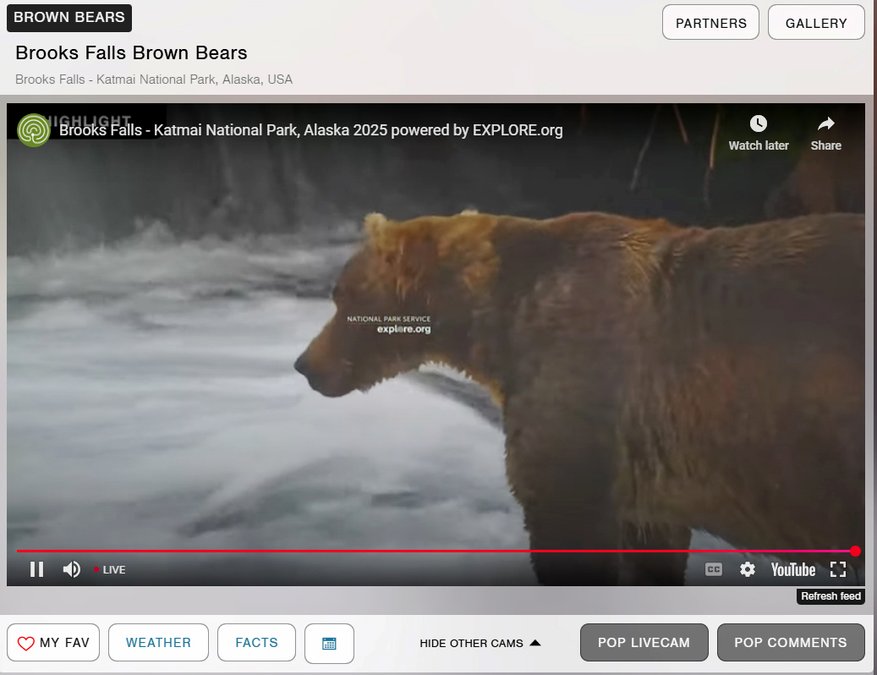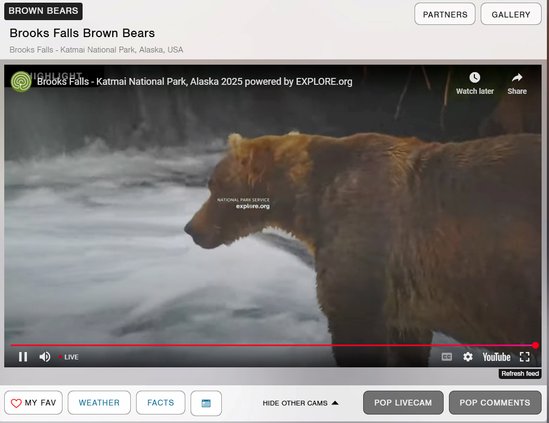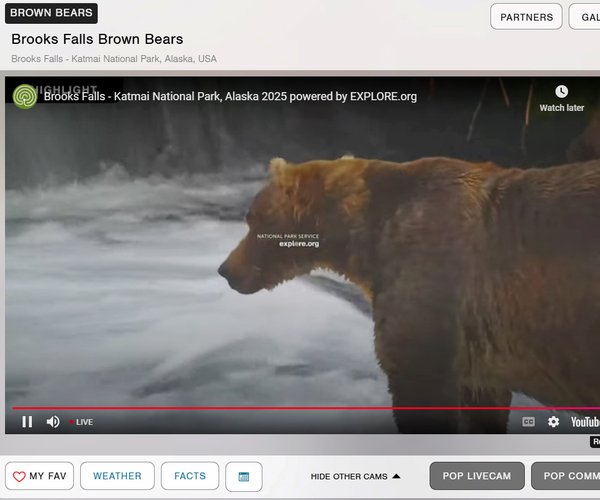Humans have Fat Tuesday, where they live large and indulge in rich foods before depriving themselves for 40 days during Lent. Bears need to store up fat for the coming winter, which is why, every year, Explore.org hosts Fat Bear Week. It celebrates the hibernation prep for brown bears in Katmai National Park, Alaska. Explore.org has live cameras of nature areas around the world. As I write this, there’s a camera on two bears fishing in the Brooks Falls at the park, waiting to catch a fish. The sockeye salmon are swimming upstream and the bears are fattening up.
According to the site, the largest and most successful bears can catch and eat more than 30 salmon (over 120 pounds) per day. The fishing is good during the salmon migration, but webcam watchers are also advised to “keep an eye out for bald eagles, lots of gulls, and maybe even the occasional wolf trying to partake in the salmon buffet.”
Fat Bear Week runs from Sept. 23 to 30 this year. To encourage audience participation, explore.org invites viewers to vote on which bear they think is the fattest. The bears are paired up head-to-head, similar to March Madness brackets. Participants will have to enter their email address to vote one time between 11 a.m. and 8 p.m., local time, from Sept. 23-30.
If bears aren’t your thing, or you need some variety, the free website also features birds, oceans, sanctuaries and more. Since explore.org was established in 2012, it has created a library of more than 250 original films and 30,000 photographs from around the world. It offers live viewing 24 hours a day at multiple sites. It bills itself as the world’s leading philanthropic live nature cam network and documentary film channel.
Our own Cheyenne Bottoms preserve used to offer a public live-streaming camera but apparently no longer does. The Kansas Wetlands Education Center does offer a virtual tour on its website, as well as a self-guided driving tour and guided van tours during regular business hours.
One of the great things about living during this period in history is that we can view nature around the globe without ever leaving our homes. One of the great things about living in the Golden Belt is that if we do venture out of our home, we can view some beautiful nature in person.





